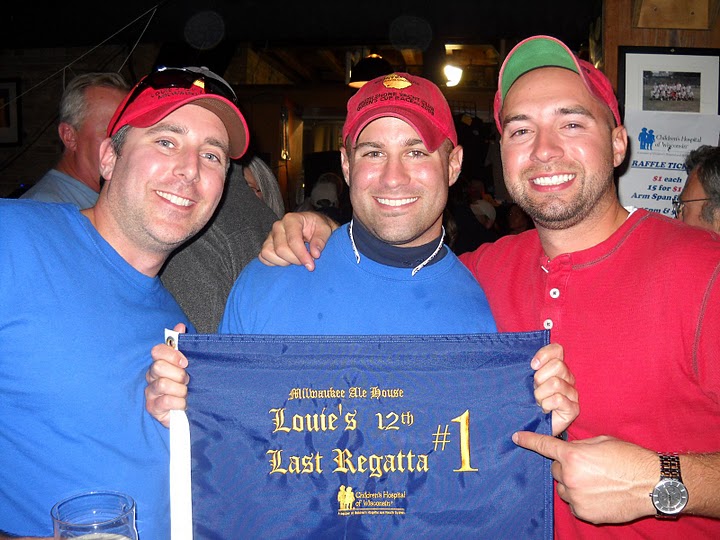
This weekend was consumed with working on Jep. Saturday morning, Steph, Drew, Chad and I got down to the barn around 11 AM to get started on the numerous projects I had scheduled to complete.
We got moving quickly. Since there were four of us, I opted to divide and conquer. I put Drew on bottom duty. When we completed the bottom last year, I noticed a blister on the port side stern after we applied the VC-17. I made a mental note and decided I would address the following season. Drew went around the bottom to see if there were any other blisters I had missed. Luckily there was only one other small blister on the keel. After marking the areas that needed to be sanded and re-barrier coated, he scuff sanded the entire bottom.

While Drew was making the bottom fast, I had Chad working on the companionway. The fiberglass behind the wood was pretty nasty. Since Chad has the most experience doing body work, he was best suited for the job. I bought some fiberglass filler at West Marine and had Chad go to town. He laid the filler on Saturday and sanded and painted on Sunday. In addition to doing the fiberglass, we fabricated an aluminum kick plate as the fiberglass at the bottom of the companionway had a large chunk out of it. The "repair" job looked as if someone took about 6 shots of Jack Daniels and squirted epoxy on the exposed fiberglass. We didn't finish installing the kick plate but plan to do that next weekend. That should dramatically improve the look and finish of the companionway opening.

Steph and I got to work installing my new winch and rope clutch for the main. Steph helped me last year install the deck organizers and genoa track so we were pretty seasoned on installing deck hardware. The installation went pretty quick. I tied a line to the halyard organizer plate and ran it through the deck organizer to aid in placing the hardware. I first mounted the rope clutch. Once the clutch was in place I was able to position the winch. Of course, I applied plenty of silicone to ensure the deck stays water tight. Done.

After finishing that installation, Steph and I got working on the rudder and rudder bracket. I had her sand the rudder down and wipe with mineral spirits to prep it for VC-17. While she was prepping the rudder, I repainted the rudder bracket. As the bracket gets splashed by the water in the river frequently, it gets a lovely coat algae and other marine growth. I opted to paint the bracket two tone: the top with Rustoleum (same stuff I used before) and the bottom with VC-17. I think it looks sharp.

This morning (Sunday) I met Chad down at the boat to finish up the projects we started on Saturday. Chad got back to work on the companionway while I sanded down the blisters identified by Drew. I also applied barrier coat to the bottom edge of the stern as I am going to paint part of the stern with VC-17. Like the bottom of the rudder bracket, the bottom edge of the stern got the said marine coating last year from getting splashed by our crystal clear river water. I had to scrub the sludge from the river off every couple weeks. That got old fast. Hopefully the VC will solve that problem.

While I waited for the barrier coat to dry I got working on rigging my boom so that I can route my outhaul to the cockpit. This was a pretty easy task. I installed a new Ronstan block at the back end of the boom so the outhaul line attached to the sail can can route forward. I then installed Harken cheek blocks at both ends of the boom. Pictures describe the system I installed far better than I can with words so take a look. As I stated in previous posts, my new main has a loose foot and having an adjustable outhaul will be critical in achieving proper sail shape.

The final project took all of 10 seconds. When I bought Jep, there was a depth gauge installed on the port side bulkhead that never worked. Additionally, the glass covering the gauge was broken. It looked terrible and made the boat look old (I also got sick of people asking what it was and why it was broken). While Chad was taking a break and having a beer, he popped the gauge out and I did something I've wanted to do for 3 years - I tossed that POS in the trash. I bought some smoked plexigass and will install that as a makeshift window next weekend.

All we have left is to reinstall the exterior wood, installed the kick plate, plexiglass window and paint the bottom! Then we'll clean and wax the hull and Jep will be ready for launch!
 Well, I finally broke down and did it. I bought a new motor for Jep!
Well, I finally broke down and did it. I bought a new motor for Jep! For the naysayers who scoff at the Tohatsu name, it might interest you to know that Mercury outboards 40 HP and below and ALL Nissan outboards are made by Tohatsu. The Mercury and Nissan's are simply re-branded as "premium" brands. I guess different stickers and a 30% mark up make the motor function WAY better!
For the naysayers who scoff at the Tohatsu name, it might interest you to know that Mercury outboards 40 HP and below and ALL Nissan outboards are made by Tohatsu. The Mercury and Nissan's are simply re-branded as "premium" brands. I guess different stickers and a 30% mark up make the motor function WAY better!












